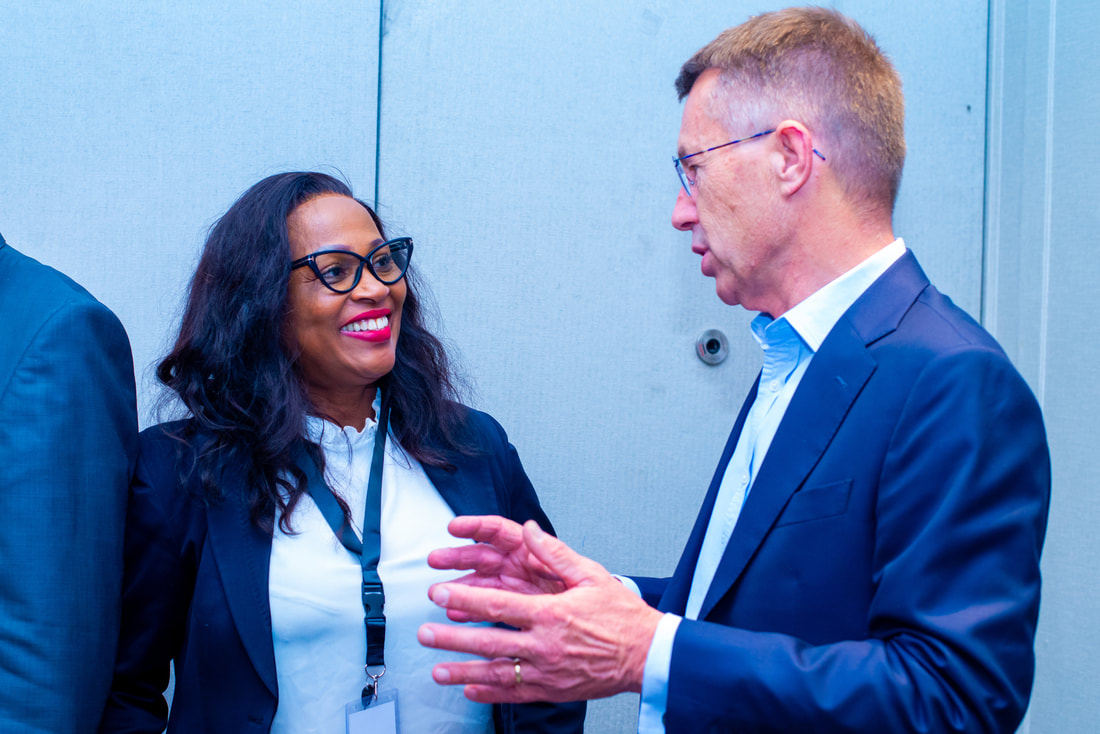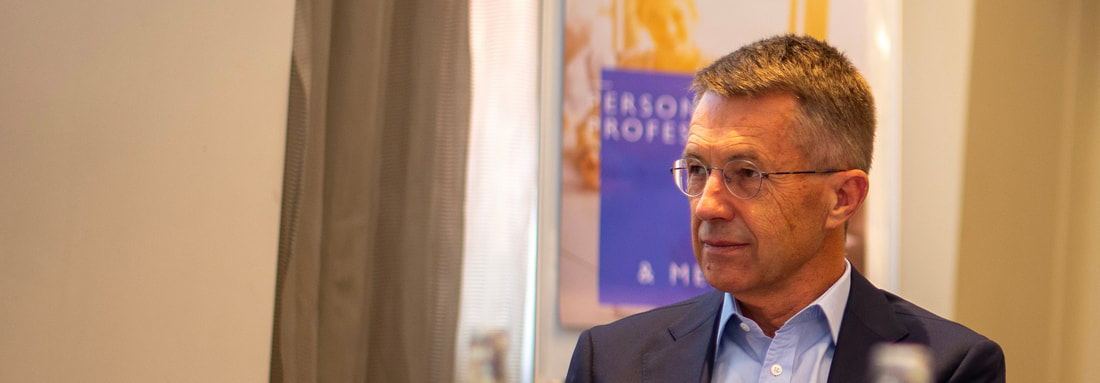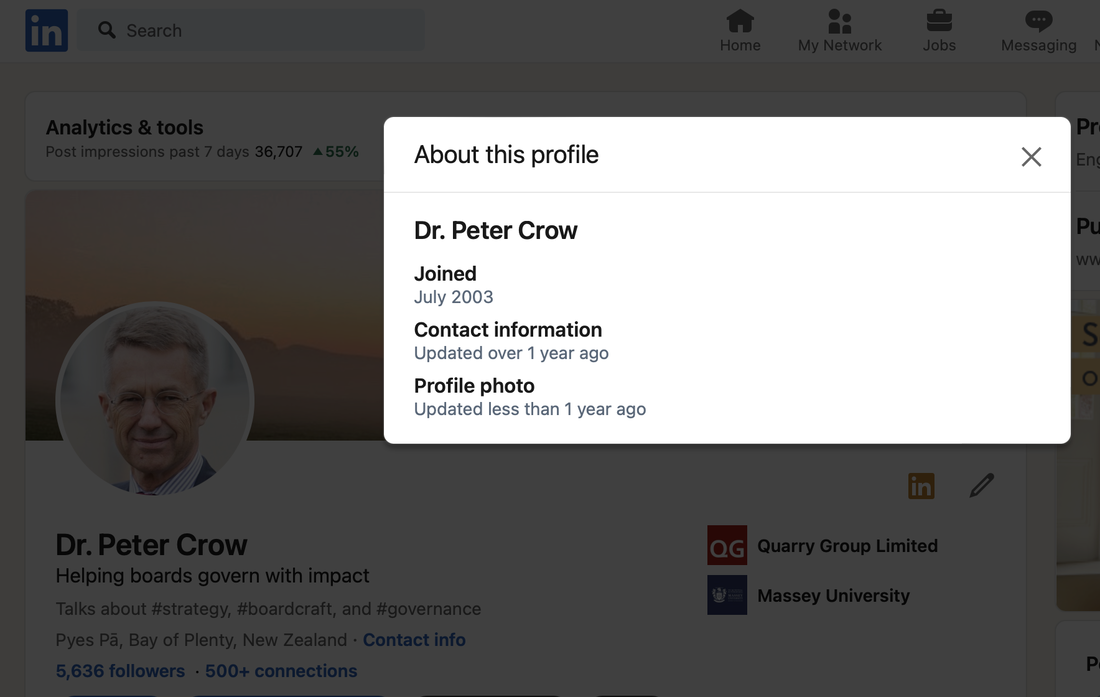|
Questions of where we came from, why various things happened or evolved as they did, and what we can learn from them to guide us as we live our lives fascinate many people—me included. From neo-lithic henges and stone circles, to the development of more recent industrial-scale enablers (notably, the wheel, the printing press, manufactories, the motor car and the Internet), man has long been fascinated with history, innovation and possibility. When we ponder historical developments and innovations such as the examples noted here—and other foundational things like language, writing, mathematics, ethics and civics—we gain insight to apply in our daily lives or use as a springboard to try to make new discoveries. This maxim applies personally, in family and social groups, and more broadly in society—and if we ignore it, it may be to our peril. The idea of learning from those who have gone before us is applicable in organisations too. How else would individuals and teams know what to do? This is what learning and development departments organise, and why professional development programmes exist. In the realm of boards and boardwork, relevant questions include three I have been asked most often over the past two decades: What is corporate governance; what is the role of the board; and, how should governance be practiced? That these questions are asked so often suggests directors (at a population level) lack the knowledge needed to be effective. Helping directors and boards govern with impact is a calling for me, so when Mark Banicevich invited me to explore the history of corporate governance—well, make a fleeting visit across a few high points in the Western context—I jumped at the chance. Hopefully, the commentary is helpful. Do let me know whether you agree or disagree with the various perspectives, and why, because I’m no Yoda (use the comment section below, or contact me directly). Life is a learning journey for me as well!
0 Comments
Boards, and an oft-mentioned but mysterious concept—governance—are topical. Daily, it seems, these terms feature in our newspapers and on social media, usually because something has gone wrong. And when it does, the chattering class is not slow to react. Typically, the targets of their comments are the board and management of the organisation. That seemingly strong organisations suffer significant missteps—or even, fail outright—on a fairly regular basis is worrisome; the societal and economic consequences are not insignificant. What can be done? Recently, the inimitable Mark Banicevich invited me to discuss boardroom success and failure, and to offer guidance that boards wanting to lift their game may wish to consider. Hopefully, our discussion is helpful and enlightening. Regardless, I welcome questions and comments, either here or send me an email. This is my second conversation with Mark (the third will be published in May). If you missed the first, you can access it here: Governance around the world. Recently, I had the great fortune to sit with Mark Banicevich, a business leader, to record a set of three fireside chats for his Governance Bites series. Mark was keen to get my take on several topical aspects of boards and governance. The first of the three conversations is now available to watch. (The second and third conversations in the series will be posted in April and May.) In this conversation, we explored board work in various jurisdictions, noting differences and similarities along the way. While a 20-minute whistle-stop conversation is hardly sufficient to do the task justice, I do hope it encourages you to explore further, and is a catalyst for some conversations. And, may I ask... is the commentary helpful or not? What do you agree or disagree with? I'd be glad to hear your thoughts, either in the comments section below, or directly, if you prefer. As regular readers know, I read widely; topics I explore span (in addition to core themes of corporate governance and strategy) include philosophy, neuroscience, business, history, military strategy and more besides. I usually take notes, as an aide memoire for later reference. Some articles are memorable, others less so. This one recently-published article piqued my attention because it reminded me of a question I face most weeks: "What do you do?" Most enquirers expect to hear a job title or a profession, to enable them to 'position' me, which is fine if the 'job' is a well-known profession or vocation, such as a doctor, teacher, plumber or lawyer. But what about a director, or an advisor? Is offering a one-word response helpful? Might it enlighten or obfuscate? For those who understand the roles of director and advisor, one-word descriptors are adequate. But for others (the majority, even most?), the response is more likely to an awkward smile, as if to say, "I wonder what one of those is or does? Does he mean a company director, a movie director, an orchestra conductor, or something else?" or, "What is an advisor? It sounds like a fancy name for a consultant." What an unhelpful interaction! Clarity and simplicity are vital if we are to communicate effectively. And the effectiveness of what we utter—whether our message got through—is determined by the listener not the speaker. With this in mind, I try to read the person before answering. If they appear knowledgeable of business matters, I tend to say I work with boards, sometimes adding that I help them see around corners and govern with impact; an advisor. But if not, I say I'm a troubleshooter who works with business leaders, or something along those lines. One thing I never say: I'm a consultant—they are people who make decisions and implement things for others. I don't. Rather, I ask questions to gain insight and make suggestions. Whether the client takes up the advice or not is their decision. So, returning to the headline question. The words we utter: do they matter? Yes, they surely do, if we are to communicate well.
Recently, I announced the findings of empirical research conducted over an eight year period. The aim of that research was to discover how many boards are fully aligned in relation to corporate purpose. The findings were staggering: five per cent of the participating boards—yes, one in twenty—were completely aligned in relation to corporate purpose. When asked, every director and executive had an answer, but only five boards (out of one hundred and three, to date) had one answer. How can any board do its job (make informed decisions, and provide effective steerage and guidance) if it has not first agreed on an objective (purpose) to work towards? Compare this situation with that of a plant. The example in the picture—echium vulgare, or, more commonly, viper's bugloss or blueweed—is as good as any. Echium vulgare, a native of Europe, is an introduced species in parts of north-eastern North America, south-eastern South America, and New Zealand. The plant is toxic to horses and cattle, but the bright blue flowers are very attractive to bees. And, despite the toxins in the plant, honey produced from the nectar is very tasty indeed! "So what?" you might ask. To compare a board and a plant seems a little odd. Yes, maybe, but please allow me to explain. E. vulgare, like all other plants, has a single purpose, which is to grow and reproduce. All the plant's energies are dedicated to this single goal, using the resources available to it. Nothing more, and nothing less. In contrast, many companies operate without an overarching and enduring goal, as the research mentioned above shows (save to make a profit). And that begs another question: how can any organisation realise its full potential without first establishing a clearly defined and achievable goal? 'Purpose' has become a hot topic in board, shareholder and stakeholder circles. Some have interpreted purpose to mean mission and vision: an overarching goal the company intends to achieve. Others have a different understanding—one that positions the company as a servant of society, as the question below illustrates: How can a company not be in the business of improving human health and making the world a better place? This question, posed by a US-based leadership consultant, positions purpose as a catalyst to influence or resolve an external societal or environmental situation. In effect, the underlying expectation is that the company prioritises something external and, most probably, well beyond the company's means and ability to influence, much less achieve. The difference between the two understandings is stark, as are the implications. Readers will, probably, gravitate towards one or other, and some may hold such strong views as to be offended by 'the other one'. And that is okay; shareholders and the board can strive to achieve whatever they want—such is their prerogative. What matters is that every board takes responsibility for answering the question, of why the company it is charged with governing exists. Essentially, "For what purpose?" Without this, the company will lack a North Star, and efforts to create a meaningful strategy, let alone allocate resources well and achieve high levels of performance, will be fraught. But, if purpose is clearly stated, and agreed and understood by every director and all key staff, the company will not only attain membership of a most desirable club—the Five Percent Club—the board will have established a robust foundation upon which a coherent strategy can be developed, resources allocated, decisions made, and the full potential of the company pursued. And that, I think, is a good thing.
A few weeks ago, while facilitating a board masterclass at Naivasha, Kenya, I had the good fortune to see some local wildlife at close range. Some people consider walking in close proximity to wild animals to be dangerous, for it may portend harm or injury, but others embrace the activity with open arms. Thinking, that well-spring from which ideas and insights emerge, innovations are birthed, and humanity progresses and flourishes, is similarly polarising. One of the things I have been thinking about recently is quite selfish: What direction should I take my writing in 2024? Musings is nearly twelve years old (first entry was in March 2012, which coincided with my doctoral research efforts, and sharing of conference papers and articles). While the longevity makes it a rarity, my motivation has not changed. It has been to share thoughts on corporate governance, strategy and boardcraft; our place in the world; and other topics that catch my attention. Apart from the introduction of 'boardcraft', a word I coined in 2020, this overarching goal has remained consistent since day one. From humble beginnings, when entries garnered just a few readers, the blog is now widely read. Over the years, many readers have been graciously engaged in a discussion about a topical matter, or asked for help to realise potential. And that has been wonderful, thank you. And, as you might expect, some entries have garnered high attention; others less so. Readers seem to prefer pragmatic guidance over provocations or calls to think more deeply about something. Recent examples of the former include writings on questions, chairmanship, and storytelling. Now, as we stand on the cusp of 2024, my hope is that Musings remains relevant and useful into the future. And with that, may I ask a favour? (Actually, provide an opportunity, to crowdsource Musings!) What topics and style would ensure Musings remains relevant and useful as it moves into its teenage years? Do respond in the comments block below, or send me an email. And, thank you in advance.
The end of 2023 is nigh; consequently, minds have turned to end-of-year celebrations, various secular and religious festivals, and, inevitably, reflections. Twenty twenty-three has been a standout year for me for several reasons, not the least of which have been many expressions of encouragement, support and endorsement as I have sought to help boards govern with impact. That I have had the opportunity to contribute is a delight. But more than this, the seemingly simple fact that directors, boards, shareholders, institutions and others invite me to advise, assess, educate, speak and otherwise provide counsel, is a great honour. Thank you to everyone who has sought me during the year and entrusted your situations to me. These are cherished interactions. As I sit back, in these final hours of the 'business' year, I have found myself pondering 'reach'. This, a response to a question from a friend who, knowing of my recent trip to Kenya, wanted to know how many countries I had visited in 2023. When I checked back, this is what I discovered:
Superficially, this sounds like a busy year. And it has been. But, I hasten to add these data are neither targets nor badges of honour. They are, simply, footprints: evidence of my travels as I have sought to help boards govern with impact over the past year. Looking to 2024, my intent is to continue to serve—subject to boards and directors wanting guidance, of course! For now though, my objective is more selfish: it is relax, read and recharge, in readiness for what lies ahead. Best wishes as you close out 2023, and turn the page to reveal 2024.
When I was a boy, milk was free (I was raised on a dairy farm), but you could buy it in a glass bottle with a silver foil top (pasteurised but not homogenised) for four cents a pint at the general store. Television (once we got one, in 1969, to see the Apollo 11 moonshot) was a grainy, black-and-white experience, with a single channel available. You got to watch whatever the broadcaster chose to deliver across the airwaves. Now, milk costs several dollars a litre, but it comes in many different styles (blue, light blue, skim, lo-fat, full-cream, calcium fortified, lo-lactose and UHT—as well as products called milk that contain no milk at all, such as oat milk and almond milk, in a wide variety of packaging options). Television has changed too: from a take it or leave linear broadcast experience via rabbit-ear antennae, to a plethora of video-on-demand (streaming) options via the internet. These are but two of thousands of examples that illustrate the onwards match of technology. Oh how life has changed, even in my lifetime. The onward march has also affected the way we communicate, not only personally with family and friends, but also with clients, suppliers and the general public as well. The notion of using a fountain pen to handwrite a letter, or making a toll call, seems quaint now—but some of us still value these moments. The emergence of social media has extended our reach in ways not thought possible twenty years ago. Sharing business cards, once commonplace, is now rare. If people want to contact me or learn about me, they tend check my LinkedIn profile (notice the assumption, that I have one), even before mentioning Google or asking about a website or blog. And that brings me to the point of this muse, which is to share one aspect of a conversation with an esteemed company director, in the hope it might encourage others committed to serving the director community. Yesterday, I was asked about the role of social media in my business life, what channels I use and how long had I been using these. The first two questions were readily answered; the third took a little longer—because I needed to find the menu option!
Thank you for permitting me to share my experience. I hope anyone considering using social media or a blog as a channel might be encouraged—not only to do so, but to stick at it over the longer term. My journey to date has been fulfilling; I have met thousands of people from many walks of life and, I hope, they have valued the interaction as much as I have.
Diversity of thought has been widely promoted in recent times, as a mechanism to supposedly increase decision quality in boardrooms. Superficially, the idea of thinking differently is a positive evolutionary development from earlier efforts (think: women on boards) to break what is often described as the Old Boys' Club. That the discourse and intent has begun to move beyond appointing directors on the basis of physical attributes is helpful. And yet, the idea of 'diversity of thought' has long troubled me. How does anyone know what I am thinking, or anyone else in the boardroom for that matter? And what is diversity in this context anyway—me having different thoughts, or several of us thinking differently? Crucially, what of any link to the board's work and purpose, which is to provide steerage and guidance to achieve a strategic goal? Researchers have published correlations based on specific datasets, but the general case (a reliable linkage between demographic diversity and organisational performance) remains elusive. The somewhat amorphous 'diversity of thought' is similarly afflicted. Recently, cognitive diversity (that is, different ways of processing information and approaching problems) has been suggested as a more reliable mechanism to achieve higher quality decisions and, by implication, outcomes. This sounds positive, but reliable explanations are yet to emerge. Why is this so hard? Could the paucity of reliable explanations (of the relationship between board work and company performance) be due to researchers, directors' institutions and others trying to explain board work and develop 'best practice' models looking in the wrong place or using inappropriate tools? What if hypothetico-deductive techniques (in search of a deterministic best practice approach to some aspect of board work) are laid to one side and methods more common in social science used (critical realism or contingency theory, for example)? Should researchers embrace the idea that boards are social organisms, and that governance is a mechanism activated by the board? For the record, I employed critical realism, long-term observational techniques and contingency theory when researching boards a decade ago, as part of my doctoral research. The study was ground-breaking for it revealed new insights about board work including an explanatory framework. If you want to learn more about this study, check my thesis (academic-speak) or this article (plain-speak). In the past few weeks, I have picked up the question again (thanks to a wandering mind on long haul flights!), and have begun to wonder if fractals and chaos theory might offer a viable pathway to developing a theory of board work. Whether this might be a fruitful search or a blind alley remains unclear. Regardless, my mission is to help boards govern with impact, so the least I can do is dig further. And dig I shall. One request: If you know about fractals, or know of anyone who possess such expertise—especially in relation to social phenomena—could we schedule a call please? I'm starting from a pretty low base!
And there you have it: before many of us realised, the solar equinox has passed once more—that moment when the sun passes the celestial equator and winter (or, for those in the global south, summer) beckons. The equinox also signals the recommencement of on-the-ground contributions in the Northern Hemisphere. To wit, I shall be in the United Kingdom and Switzerland soon—from 2nd through 13th October, in fact. My programme sees me in London, Leeds, Cambridge, Zurich and St. Gallen, for a variety of contributions:
I am looking forward to hearing the heartbeat of company directors, advisors and others, to understand recent developments and emerging trends, and to discern changes since I visited earlier this year. I have intentionally held space available for a few informal meetings. So, if you want to meet up while I am in your neighbourhood—be it to discuss the work and impact of boards, corporate governance, or some other topic of interest—do get in touch. I would be delighted to hear from you.
|
SearchMusingsThoughts on corporate governance, strategy and boardcraft; our place in the world; and other topics that catch my attention. Categories
All
Archives
May 2024
|
|
Dr. Peter Crow, CMInstD
|
© Copyright 2001-2024 | Terms of use & privacy
|









